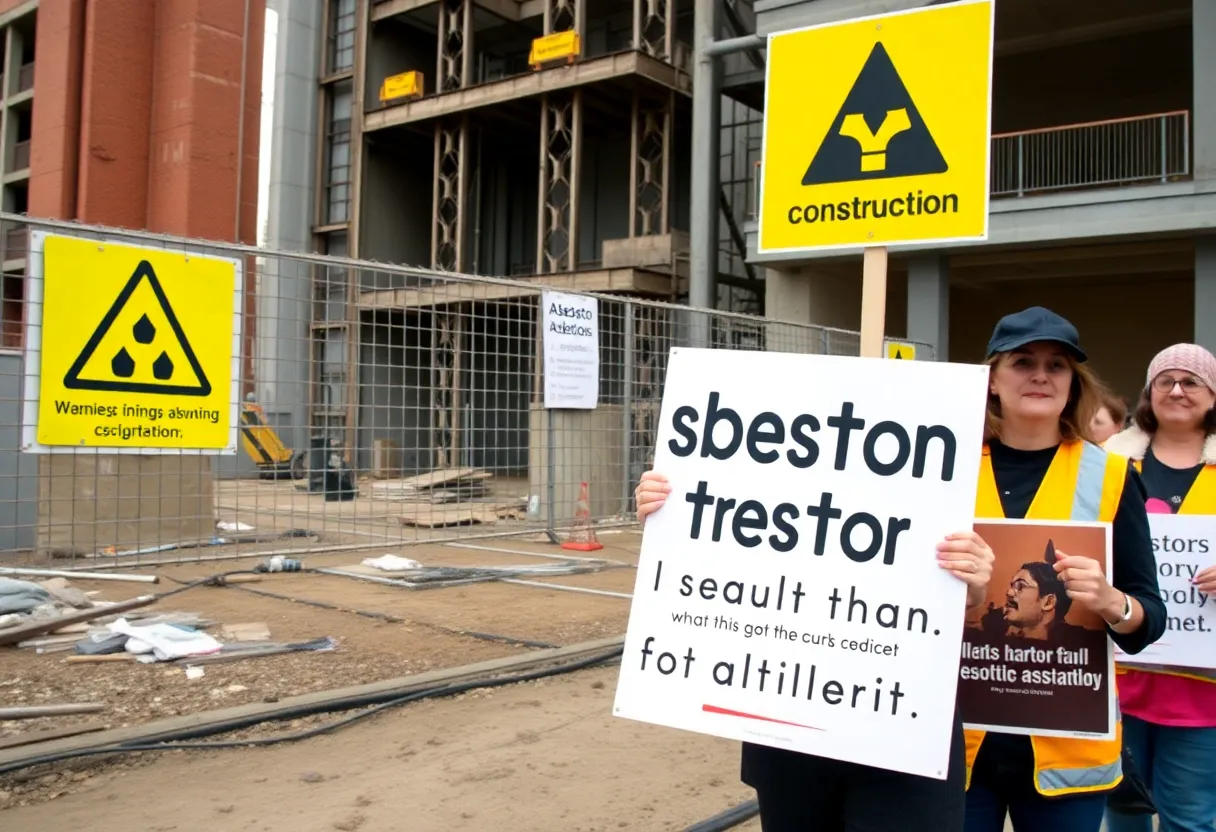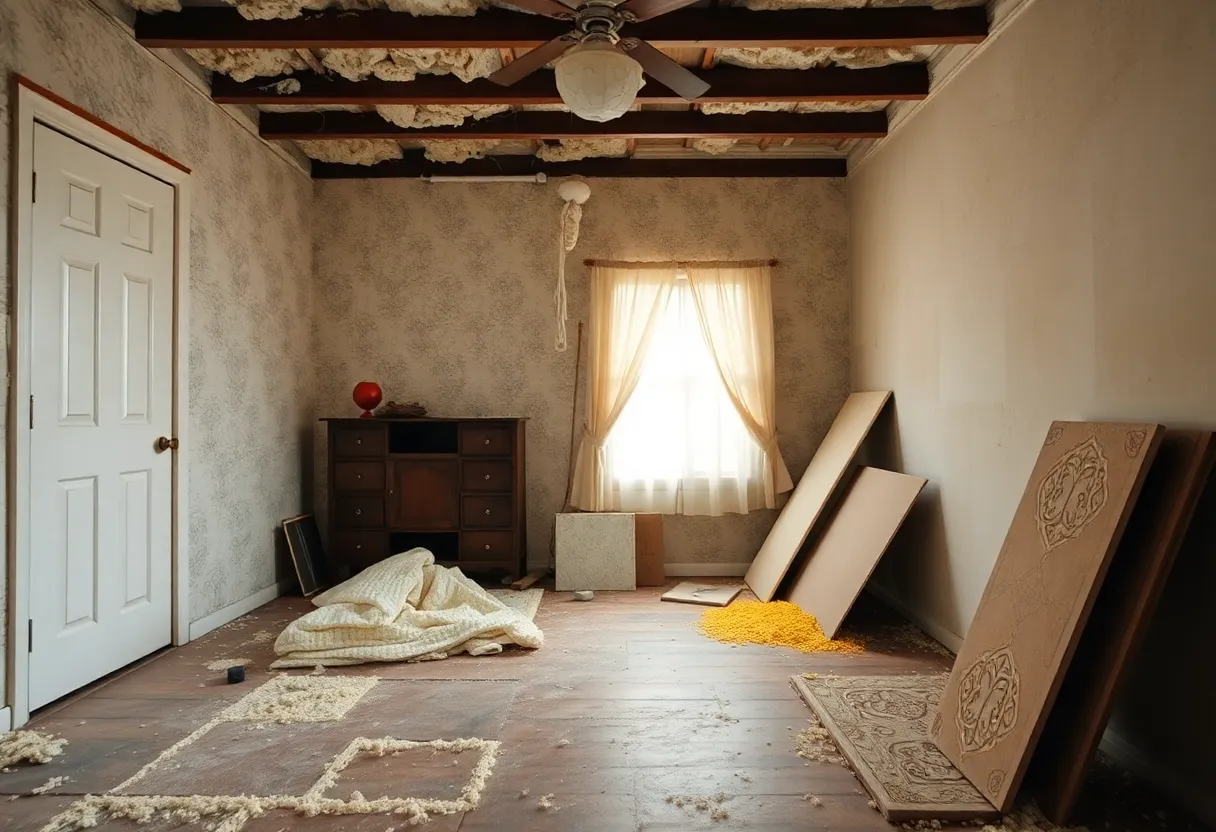News Summary
The EPA is reconsidering the chrysotile asbestos ban initiated in 2024, raising concerns among health advocates about potential health risks.
Chrysotile Asbestos Ban Under Review: A Risky Rethink?
The looming reconsideration of the chrysotile asbestos ban by the United States Environmental Protection Agency (EPA) has sparked considerable alarm among health advocates and environmental groups. Once hailed as a significant victory for public health, the ban—initially instituted in March 2024—has come under scrutiny amidst a shift in administrative priorities.
What’s at Stake with Chrysotile Asbestos
Chrysotile asbestos, commonly known as “white” asbestos, is the only type still permitted for use in the United States. Historically favored for its strength and durability, this mineral fiber has been a staple in construction and manufacturing. However, its dangers are well-documented: asbestos exposure is a leading cause of severe health problems like asbestosis, lung cancer, and malignant mesothelioma.
Since the initiative to ban chrysotile asbestos, the EPA laid out a comprehensive phase-out plan. This process would span up to 12 years for certain industries and was rooted in the imperative to eliminate unreasonable health risks across the nation.
Federal Tug-Of-War: New Administration, New Direction
The Biden administration had initially championed the ban, recognizing the long-standing health concerns associated with asbestos exposure. However, under the Trump administration’s recent push to review the ban, the EPA is now set to reassess its implications. In June 2025, the agency lodged a motion with the Fifth Circuit Court of Appeals to reevaluate whether the ban exceeded necessary measures to ensure public safety, with a drawn-out process anticipated to last around 30 months.
The implications of this move are profound—an incalculable number of lives may be at stake. Currently, approximately 40,000 deaths annually in the U.S. are attributed to asbestos-related diseases. The World Health Organization has estimated that over 200,000 deaths globally are due to occupational asbestos exposure, particularly among construction workers. Most disturbingly, more than 70% of these deaths are linked to work-related cancers.
Legacy Risks: Asbestos in Older Buildings
Despite evident declines in asbestos use, this toxic mineral remains prevalent in many older buildings throughout the United States. Renovations and demolitions pose significant hazards as disturbed asbestos can lead to exposure to deadly fibers. The consequences can be catastrophic, often manifesting decades after first exposure.
In light of these ongoing risks, Senator Jeff Merkley and Representative Suzanne Bonamici have introduced the Alan Reinstein Ban Asbestos Now Act in 2023. This critical legislation seeks to prohibit all forms of asbestos in commercial use, a necessary step towards safeguarding public health.
Industry and Advocacy Reactions
Advocacy groups have raised their voices against the reconsideration of the chrysotile ban. They argue that any shift back towards permitting the use of chrysotile asbestos represents a dangerous compromise of public health in favor of industry interests. Critics assert that this move is a nod to the lobbying efforts of chemical corporations, like the American Chemistry Council, which has expressed its support for a risk-based regulatory approach regarding asbestos.
Investigations and Future Directions
The EPA is currently investigating the legacy uses of asbestos and asbestos-containing talc, emphasizing a commitment to protecting public health. However, the question remains: will these investigations yield meaningful actions, or will they enable the reemergence of more lenient regulations surrounding asbestos?
The history of asbestos regulation in the United States is fraught with challenges. Past efforts to ban asbestos faced staunch opposition, with a federal court ruling in 1989 that the EPA had not adequately demonstrated that alternatives were less burdensome for the affected industries. Amendments to the Toxic Substances Control Act in 2016 were instrumental in facilitating the chrysotile ban, showing that regulatory frameworks can change in response to public health imperatives.
Conclusion: A Public Health Hazard?
As the EPA embarks on this controversial reconsideration, the future path for chrysotile asbestos remains uncertain. With potential legal and health ramifications at stake, one cannot ignore the historical lessons learned. It is essential to prioritize public health over industrial interests to ensure the safety of future generations.
Deeper Dive: News & Info About This Topic
HERE Resources
Major Legal Victory in Asbestos Case: $17.2 Million Verdict Against Georgia-Pacific
The Ongoing Battle Over Asbestos: EPA’s New Moves Cast Doubts
The Looming Shadow of Asbestos: Health Risks and Regulatory Challenges
Chrysotile Asbestos Ban Faces Uncertain Future Under Trump Administration
New Study Reveals Asbestos Exposure Thresholds Linked to Mesothelioma Risk
Philadelphia School District Enters Asbestos Management Agreement to Avoid Prosecution
Philadelphia School District Under Fire for Asbestos Management
Philadelphia School District Faces Criminal Charges Over Asbestos Mismanagement
Philadelphia Schools Under Pressure to Address Asbestos Issues
Chrysotile Asbestos Ban Under Fire: A Dangerous Game of Reconsideration



















